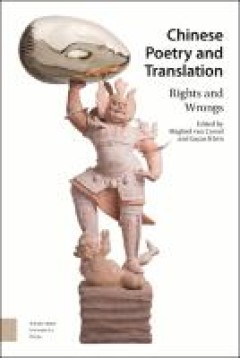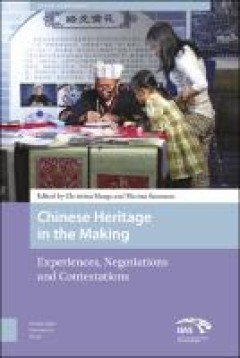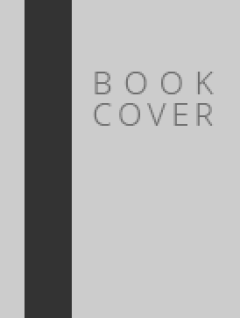Ditapis dengan
E-book Basic Mandarin Chinese : Reading & Writing Practice Book
This book includes two pages of reading and writing exercises for each of the four parts of every unit of Basic Mandarin Chinese Reading & Writing. The first section of the reading and writing exercises consists of three phrases or sentences for dictation. * You should listen to the corresponding section of the included disc and transcribe what you hear into Chinese characters. Since this is fo…
- Edisi
- -
- ISBN/ISSN
- 9781462919307
- Deskripsi Fisik
- 336 hlm
- Judul Seri
- -
- No. Panggil
- 495.1 KUB b
E-book Integrated Chinese
It has been over ten years since Integrated Chinese (IC) came into existence in 1997. During these years, amid all the historical changes that took place in China and the rest of the world, the demand for Chinese language teaching-learning materials has been growing dramatically. We are greatly encouraged by the fact that IC not only has been a widely used textbook at the college level all over…
- Edisi
- -
- ISBN/ISSN
- 9780887276385
- Deskripsi Fisik
- 371 hlm
- Judul Seri
- -
- No. Panggil
- 495.1 LIU i
E-book The Poetry of Cao Zhi
Readers of this volume will be able to tell from the Introduction andnotes throughout the book how great a debt I owe to many distin-guished scholars past and present. Without them, this work would havebeen impossible. Here I want to express my gratitude to a number ofpeople who have influenced this project more directly. The book isdedicated to David R. Knechtges, wh…
- Edisi
- -
- ISBN/ISSN
- 9781501515637
- Deskripsi Fisik
- 431 hlm
- Judul Seri
- -
- No. Panggil
- 895.1 CUT t

E-Book Chinese Poetry and Translation: Rights and Wrongs
Chinese Poetry and Translation: Rights and Wrongs offers fifteen essays on the triptych of poetry + translation + Chinese. The collection has three parts: "The Translator's Take," "Theoretics," and "Impact." The conversation stretches from queer-feminist engagement with China's newest poetry to philosophical and philological reflections on its oldest, and from Tang- and Song-dynasty classical p…
- Edisi
- -
- ISBN/ISSN
- 9789462989948
- Deskripsi Fisik
- 353 halaman
- Judul Seri
- -
- No. Panggil
- 895.1 CRE c

E-Book Chinese Heritage in the Making
The Chinese state uses cultural heritage as a source of power by linking it to political and economic goals, but heritage discourse has at the same time encouraged new actors to appropriate the discourse to protect their own traditions. This book focuses on that contested nature of heritage, especially through the lens of individuals, local communities, religious groups, and heritage experts. I…
- Edisi
- -
- ISBN/ISSN
- 9789048534067
- Deskripsi Fisik
- 299 halaman
- Judul Seri
- Experiences, Negotiations and Contestations
- No. Panggil
- 895.1 MAA c
The Matrix of Lyric Transformation : Poetic Modes and Self-Presentation in Ea…
When traditional Chinese critics discuss pentasyllabic poetry,they usually give allegorical interpretations of individual works, makegeneral observations about social backgrounds and the lives of poets, oroffer impressionistic comments on the aesthetic qualities of the works ofgiven poets. Based on what they discover in these studies, they sketch abroad outli…
- Edisi
- -
- ISBN/ISSN
- 9780472901449
- Deskripsi Fisik
- 273 hlm
- Judul Seri
- -
- No. Panggil
- 895.1 CAI t
E-book Poems of the Five Mountains : An Introduction to the Literature of the…
The poems in this book were written in Chinese, in the classicshih form.1 Their authors were Japanese Zen monks whose livestogether span the years from 1278 to 1429, for Japan a time ofturmoil but also of growth. Although ten of these sixteen menvisited China, all were born and died in Japan: for all, Chinesewas an acquired tongue. Most of their ver…
- Edisi
- -
- ISBN/ISSN
- 9780472902156
- Deskripsi Fisik
- 127 hlm
- Judul Seri
- -
- No. Panggil
- 895.1 URY p

E-Book Chang Ch’un-ch’iao and Shanghai’s January Revolution
Shanghai’s January Revolution was a highly visible and, by all accounts, crucially important event in China’s Cultural Revolution. Its occurrence, along with the subsequent attempt to establish a “commune” form of municipal government, has greatly shaped our understanding both of the goals originally envisaged for the Cultural Revolution by its leaders and of the political positions hel…
- Edisi
- -
- ISBN/ISSN
- -
- Deskripsi Fisik
- -
- Judul Seri
- -
- No. Panggil
- -
E-book Learning Chinese
This is a course in Standard Chinese, a language that is often colloquially referred to as Mandarin. The origins of this language and its position in the Chinese-speaking world will be discussed below, in the section on linguistic background.
- Edisi
- -
- ISBN/ISSN
- -
- Deskripsi Fisik
- 135 hlm
- Judul Seri
- -
- No. Panggil
- 495.1 WHE l
 Karya Umum
Karya Umum  Filsafat
Filsafat  Agama
Agama  Ilmu-ilmu Sosial
Ilmu-ilmu Sosial  Bahasa
Bahasa  Ilmu-ilmu Murni
Ilmu-ilmu Murni  Ilmu-ilmu Terapan
Ilmu-ilmu Terapan  Kesenian, Hiburan, dan Olahraga
Kesenian, Hiburan, dan Olahraga  Kesusastraan
Kesusastraan  Geografi dan Sejarah
Geografi dan Sejarah